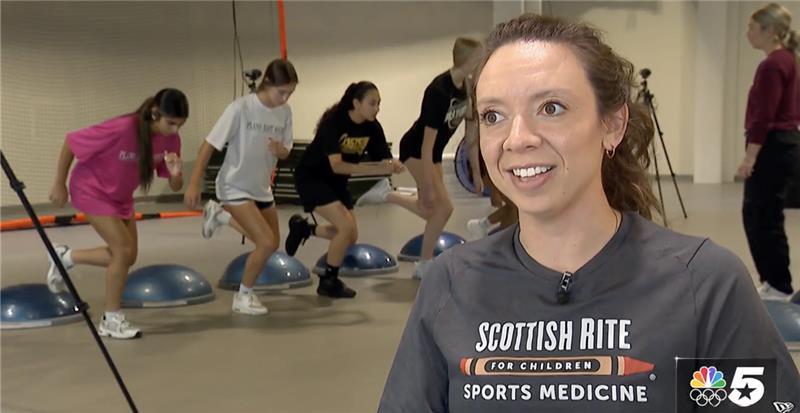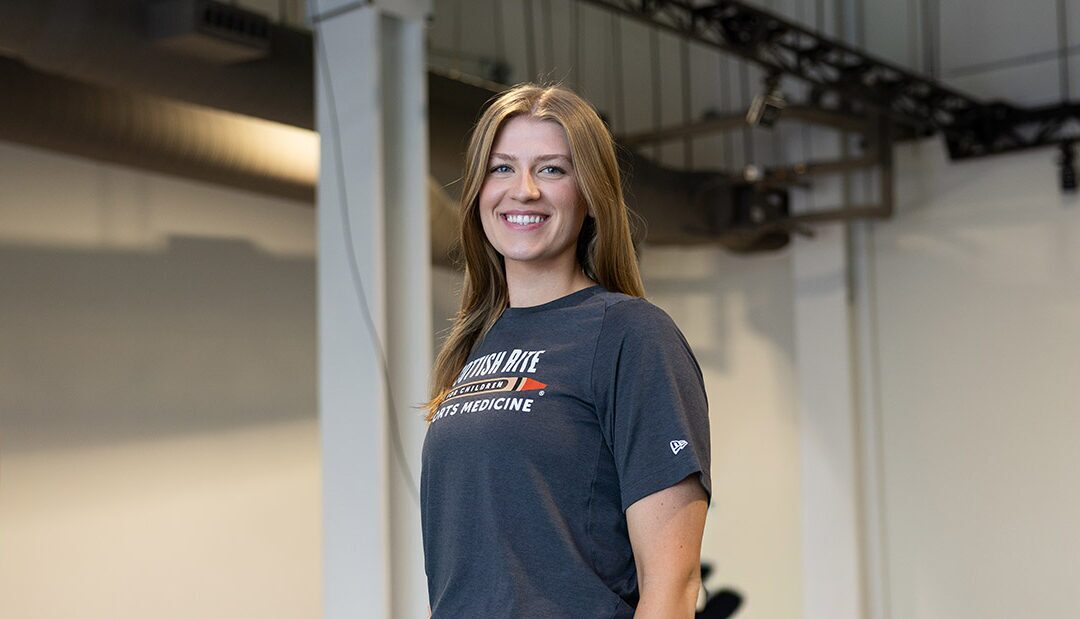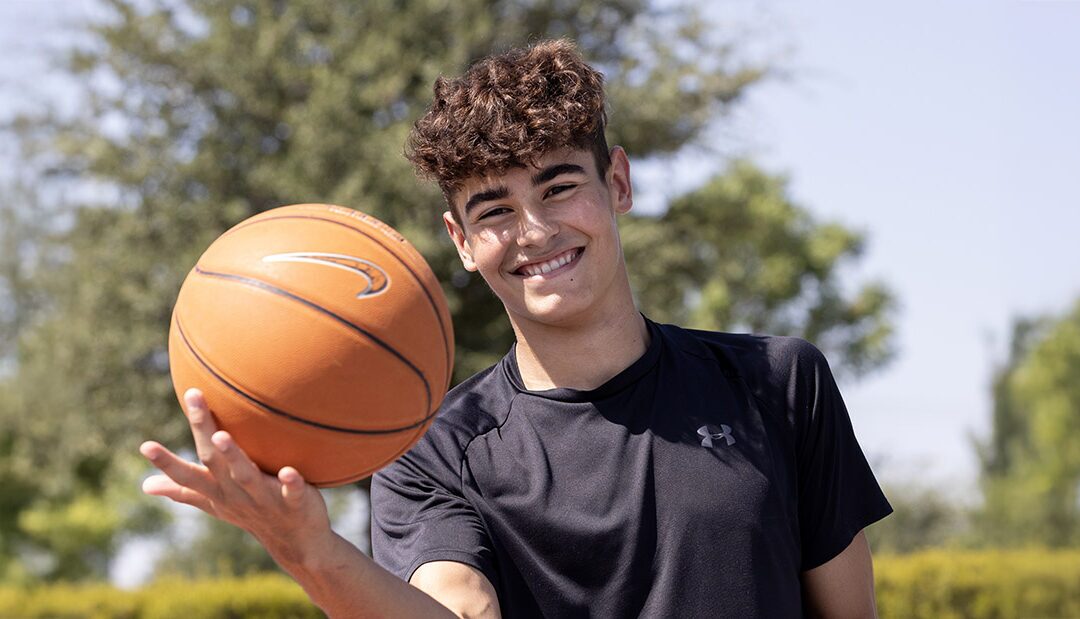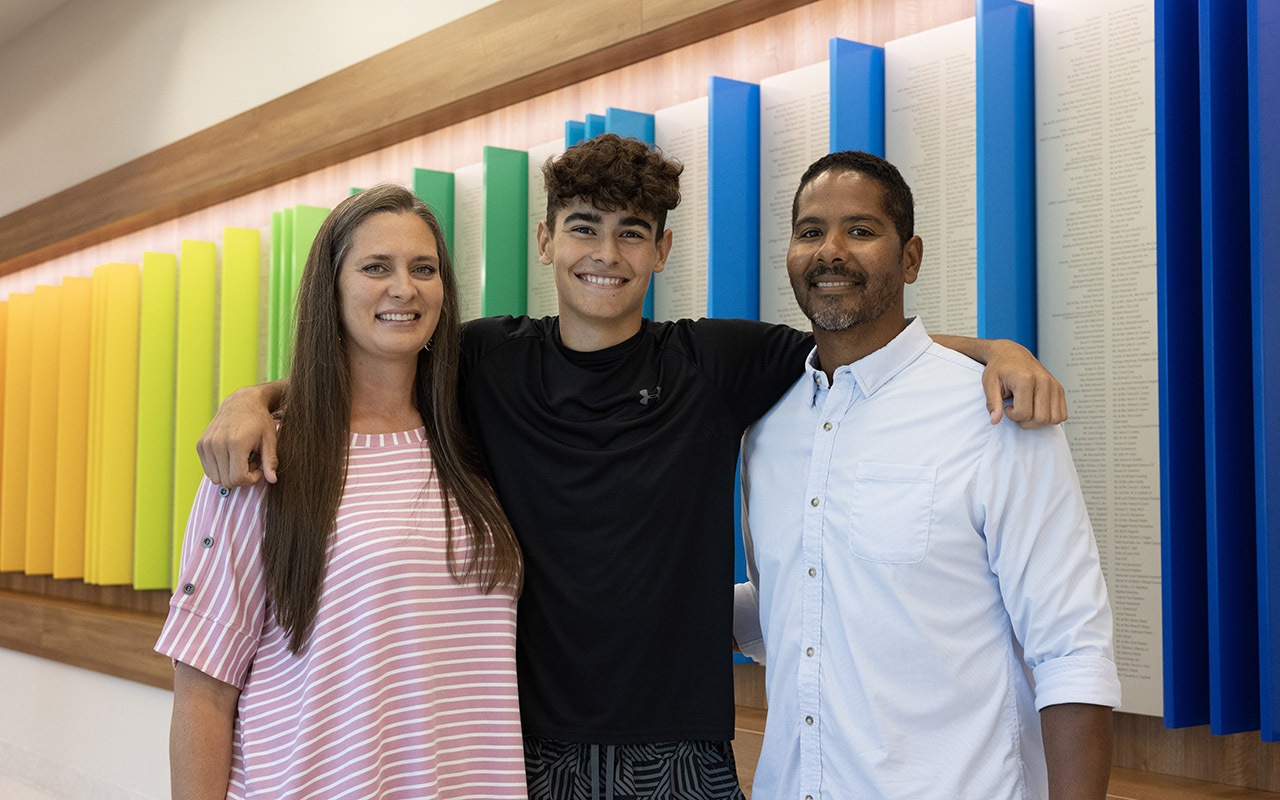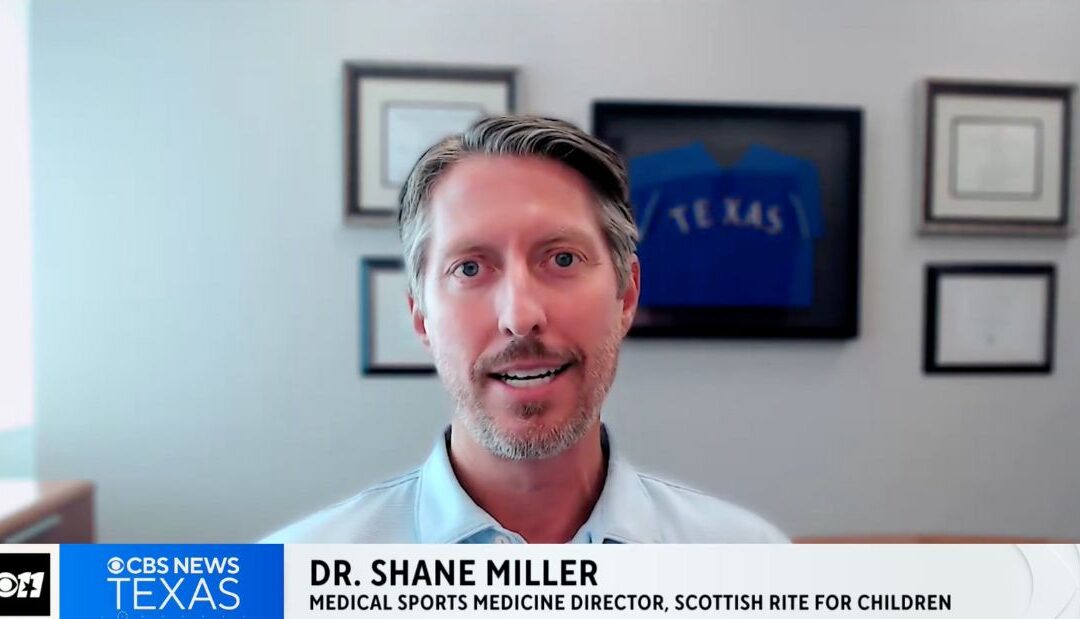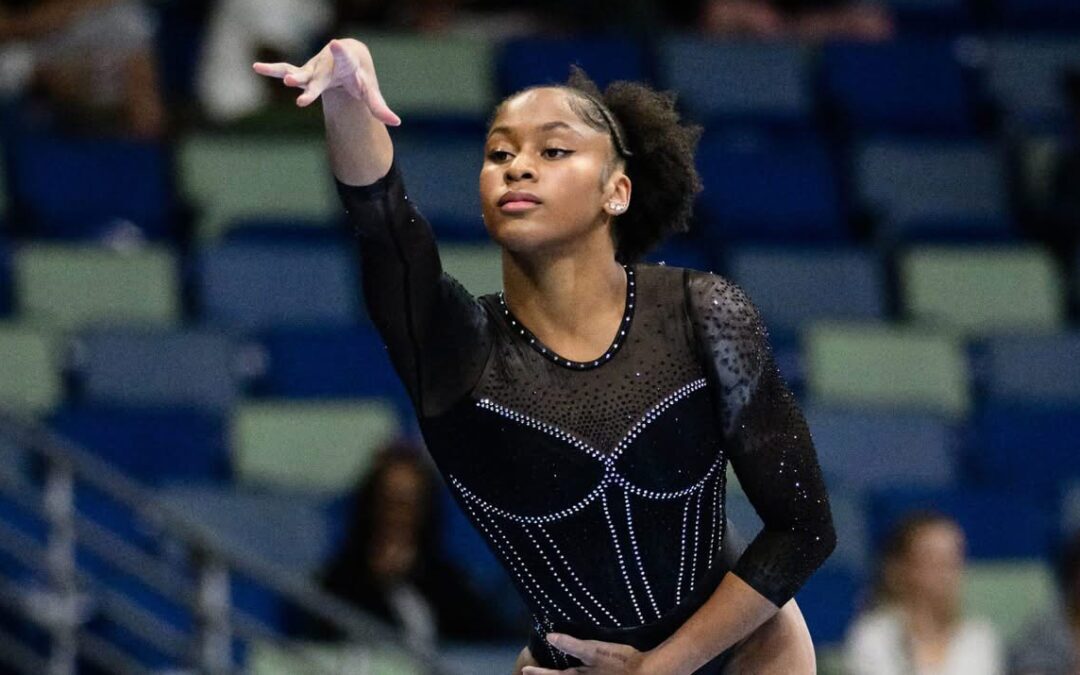Cover story previously published in Rite Up, 2025 – Issue 3.
by Kristi Shewmaker
It happened after school. At an innocent game of touch football, Noah was tackled from behind. He never saw it coming. At just 11 years old, Noah’s knee pain began.
A bone bruise in his right knee was the first diagnosis he received. Noah’s physical therapist questioned the diagnosis because he was not progressing, and he lost muscle. His pain eventually waned, but as he grew over the years, the pain increased. One day at baseball practice while going after a ball, he winced in pain.
“We got into the car, and he just bawled and bawled,” says Philip, Noah’s father. “Just the look on his face — I could see his despair, his helplessness to the pain.” At the time, Noah and his family lived in the Houston area. His parents took him to one doctor after another. Finally, a doctor diagnosed him with osteochondritis dissecans (OCD), a joint condition in which bone underneath the cartilage softens due to an interruption in the blood supply.
A rare condition that affects less than one percent of the population, OCD occurs most often in children and adolescents, particularly when a child is growing. It affects boys more commonly than girls, and it can occur in joints such as the ankle and elbow but is most often found in the knee. The cause of OCD is unknown, but it can be associated with injuries, as well as longterm repetitive impact to the joint. Many physicians never see a child with OCD, and some treat only a few cases per year.
After receiving this diagnosis at age 14, Noah was scared. He had played multiple sports since he was 4. “The older I got, the worse the pain got, and I couldn’t tolerate it anymore,” he says. “I thought, ‘I’m going to be 18 and not be able to play sports.’”
Noah’s family was told his treatment would most likely require many surgeries and would cost a minimum of $100,000. “We thought we were going to have to refinance our house,” says Brooke, Noah’s mother. Researching OCD online, she stayed up late into the middle of many nights reading medical articles and creating a short list of physicians who specialize in treating the condition. Noah’s family seriously considered moving to Germany for the summer so he could get treatment for a third of the price from a specialist there.
Fortunately, they did not have to move overseas because they found an expert in Texas. Brooke discovered Henry B. Ellis, M.D., pediatric orthopedic surgeon and medical director of clinical research at Scottish Rite for Children Orthopedic and Sports Medicine Center in Frisco.
She found Dr. Ellis by reading articles that he published through his collaborative research with the international Research in OsteoChondritis of the Knee (ROCK) study group. “I also found some social media parent groups who said, ‘If your doctor’s not a ROCK doctor, find a ROCK doctor,’” Brooke says. “They provide the gold standard of treatment.”
She found Dr. Ellis by reading articles that he published through his collaborative research with the international Research in OsteoChondritis of the Knee (ROCK) study group. “I also found some social media parent groups who said, ‘If your doctor’s not a ROCK doctor, find a ROCK doctor,’” Brooke says. “They provide the gold standard of treatment.”
Currently, Dr. Ellis is chair of the ROCK research committee and will be president of the group next year. ROCK has enrolled approximately 2,500 OCD cases in its database, and Scottish Rite for Children is one of the highest contributing institutions. “At Scottish Rite, we take care of well over 100
kids a year with OCD,” Dr. Ellis says, “and that’s not just surgical treatment.” OCD can also be treated nonoperatively if it is caught early enough during the progression of the condition.
Two weeks later, Noah and his family drove from Houston to Scottish Rite’s Frisco campus for the first time to meet Dr. Ellis. He recommended that Noah undergo surgery and scheduled it for later that month. “I felt at ease because I straight ahead asked him, ‘How many of these surgeries have you done?’” Philip says. “And he was like, ‘I just operated on a similar young athlete with a similar OCD this morning.’”
Though OCD surgery is a routine procedure for Dr. Ellis, Brooke emphasizes he also customized a treatment plan to meet Noah’s specific needs. “Dr. Ellis’ goals for Noah aligned with Noah’s goals,” she says. “He was going to do everything he could to get Noah back to where he wanted to be, and we had faith in him.”
In the car on the way home, Philip asked Noah what he thought, and Noah said that Dr. Ellis actually seemed to care about his knee. The icing on the cake was when the family learned they were accepted for Crayon Care, Scottish Rite’s charity care and financial assistance program. “All these things we thought were going to be such a burden for our family — Scottish Rite took care of it all,” Brooke says.
A few weeks later, Noah underwent surgery. “When we first looked at Noah’s knee, we were concerned that it would not heal without surgery because the lesion looked unstable,” Dr. Ellis says. An OCD lesion is the portion of bone underneath the cartilage that is damaged due to a lack of blood supply. If an OCD lesion is caught early, the body can typically heal the bone itself with three to 12 months of decreased activity and rest. However, an OCD lesion becomes unstable when the body starts rejecting the damaged bone. “Noah’s body was turning the bone into fibrous tissue, which is very much like dead bone,” Dr. Ellis says. “We recognized that his body would likely continue to deteriorate and not heal.”
In surgery, Dr. Ellis removed the cartilage in Noah’s knee to clean out the unhealthy bone underneath it. Then, he replaced the dead bone with healthy bone that he took from Noah’s pelvis. Using a suture bridge technique, Dr. Ellis put the cartilage back on the bone. For four months, Noah recovered and healed before Dr. Ellis went back in to remove the sutures.
Noah came out of his second surgery in a long leg brace locked in extension. He began physical therapy near his home in the Houston area and would gradually return to activities over many months. After one year, Dr. Ellis released Noah, allowing him to return to full activities without restrictions. At his two-year post-op appointment, Noah’s X-rays demonstrated there was no OCD in his knee.
“Noah progressed as we expected,” Dr. Ellis says. “Some kids receive a diagnosis, and they’re crushed. Noah is a resilient fighter type, both mentally and physically, where he was like, ‘Let’s get this fixed so I can move on.’”
Today, Noah plays football, baseball and basketball, but he is leaning toward a future in basketball, hoping to get a college scholarship and maybe even go pro. As a junior on his high school varsity basketball team, he moves between power forward and center. He also has a pretty mean shooting game. Noah told his clinical team that when his treatment was over, he was going to “dunk on it.” In May after his two-year post-op appointment, that is exactly what he did. “When I got up there and punched it through, I was like, ‘I did it!’” Noah says.
Thinking back on Noah’s time at Scottish Rite, Brooke says, “It’s just a blessing to be where we are.” Philip agrees. “I’m not going to lie,” he says. “I was worried sick about a surgeon chopping on Noah’s knee, but Scottish Rite has definitely been a godsend. They have covered us in every aspect, enabled us to take care of our child and not leave us in a spot where we have to sell everything.”
Noah says that his experience at Scottish Rite gave him hope. “Some people have not been as fortunate as me to find a surgeon who can do what needs to be done well,” he says. “Scottish Rite helped me to value the time that I have, that I’m getting a chance to play sports again, and that I need to do it the best that I can.”
